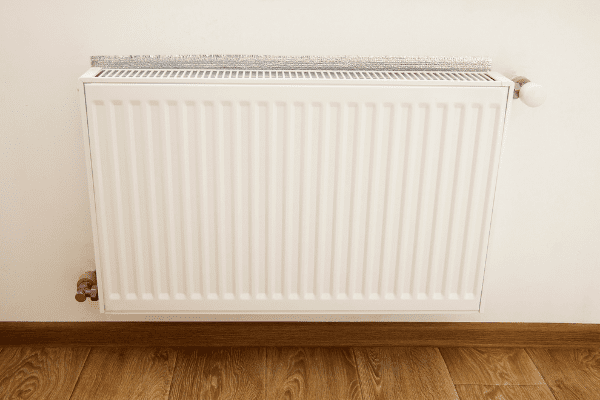Your central heating system plays an important role in your home, supplying you with the heat and hot water you need to stay comfortable.
In a typical household, over half of the fuel bills are spent on heating and hot water, so it’s vital you’re aware of the main elements of your central heating system, which can help reduce your fuel bills and carbon emissions when run efficiently.
What Types of Central Heating Systems are There?
As the name suggests, the outputs from a central
heating system are produced by one central
source and broadly fall into one of the following
types:
- wet
- electric
- warm air

How Does a Wet Central Heating System Work?
Most homes in UK have a wet central heating system. It’s made up of a central heat source – usually a gas boiler – producing hot water which is distributed around your home, heating radiators, underfloor heating and hot water from your taps and showers.
How Does an Electric Central Heating System Work?
The source of an electric heating system is usually an electric boiler and radiators. Where a traditional radiator works by convection, the heat from hot water running through its internal pipes into the air, an electric radiator conducts the heat through electricity. Similar to elements of a kettle or hob, they are heated up and that heat is transferred out into your home.
Just like a gas boiler, an electric boiler will heat the water in a storage unit before sending it out to your sinks, showers and baths as warm water.
How Does a Warm air System Work?
Warm air central heating systems work by passing cool air through a heat exchanger fuelled by gas or electricity. Once warmed, the warm air enters the room through vents in the floor, walls or ceiling.
How do I Control my Central Heating?
With the energy price cap increase on the 1st April, having an efficient heating system that you can control easily is more important than ever, as this could help to reduce your heating bills.
Depending on the type of system you have, central heating and hot water controls may vary, but in essence they consist of the following:
- A room thermostat
- A programmer
- Thermostatic radiator valves (TRVs)
Room Thermostats
The thermostat decides when your heating turns on and off. Its job is to monitor the air temperature in the house and send a signal to the boiler telling it to switch off when the house is warm enough, or on if the house gets too cold.

A Programmer
Your heating system will not come on if the air temperature is the same as the temperature set on the room thermostat. The programmer is there to switch your heating ‘on’ and ‘off’ for different periods each day. These days, programmers are worked into thermostats so you only have to use one device.

Thermostatic Radiator Valves
TRVs are in place to control the air temperature of a space by automatically adjusting the amount of hot water that enters the radiator they are attached to.
By setting up a thermostatic radiator valve in the correct way, it will allow you to create different heating zones throughout your home, despite only having one centralised boiler system providing your main source of heat.


